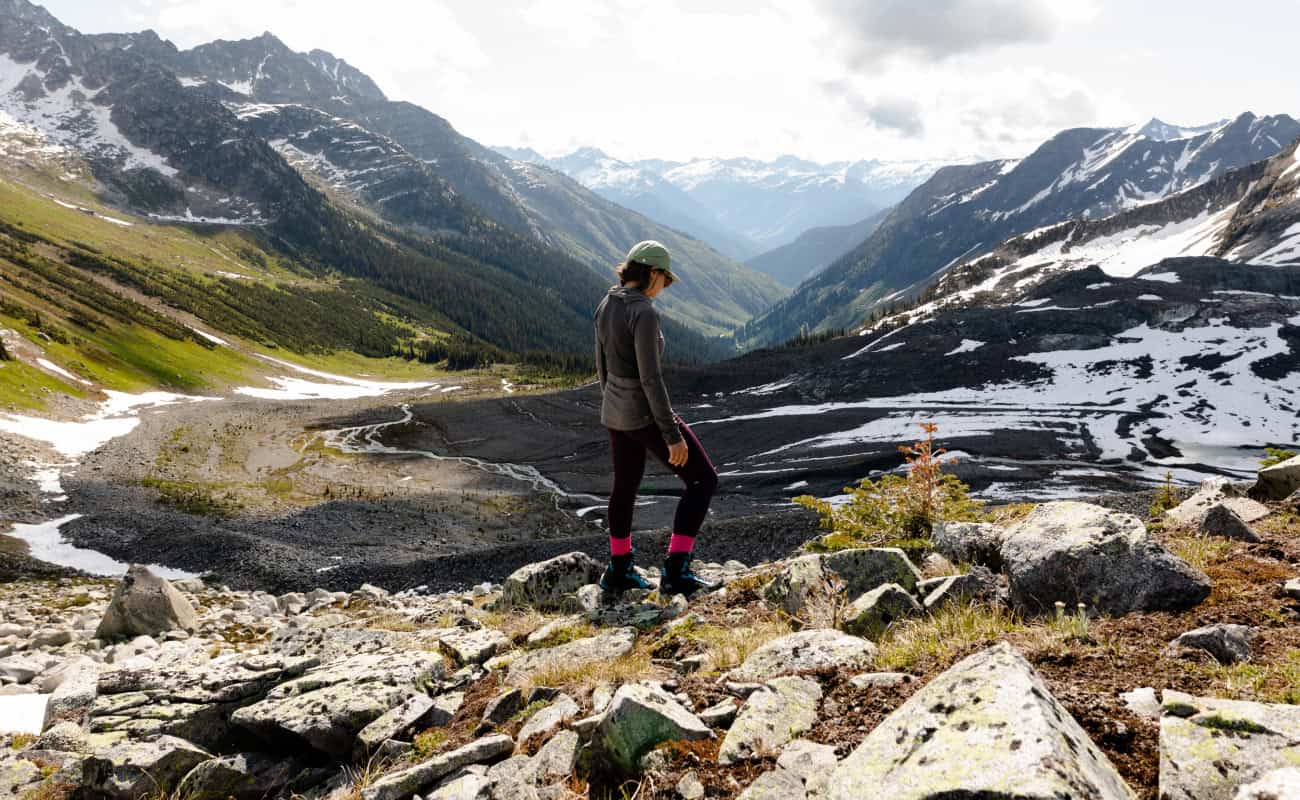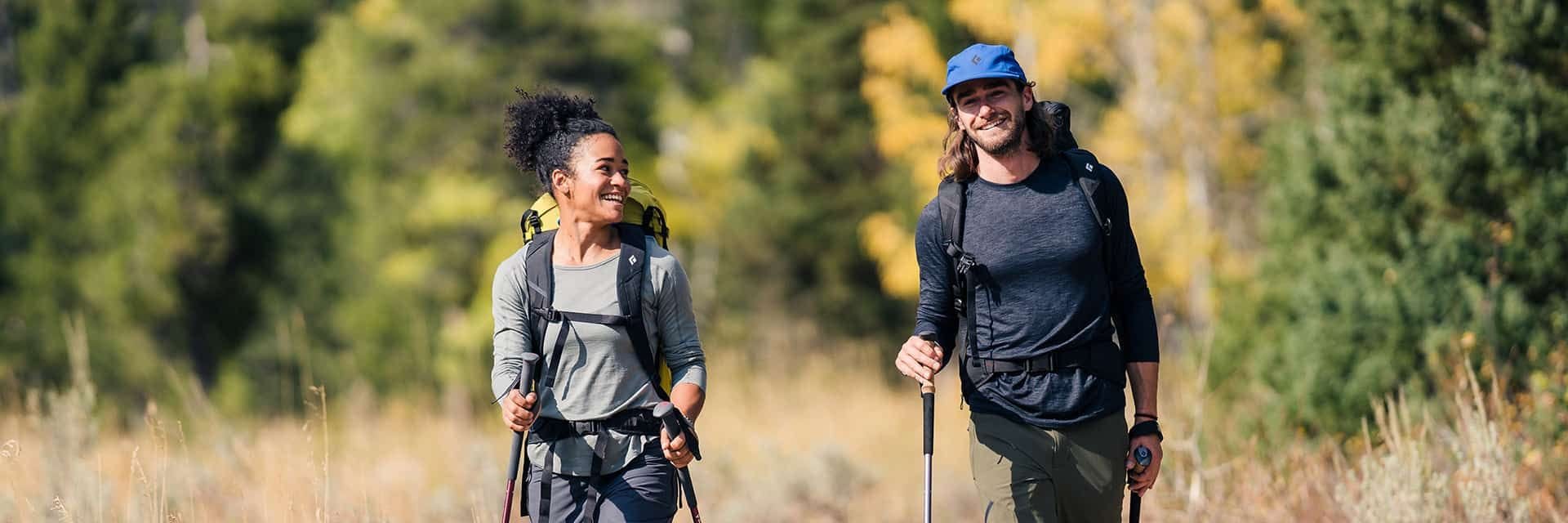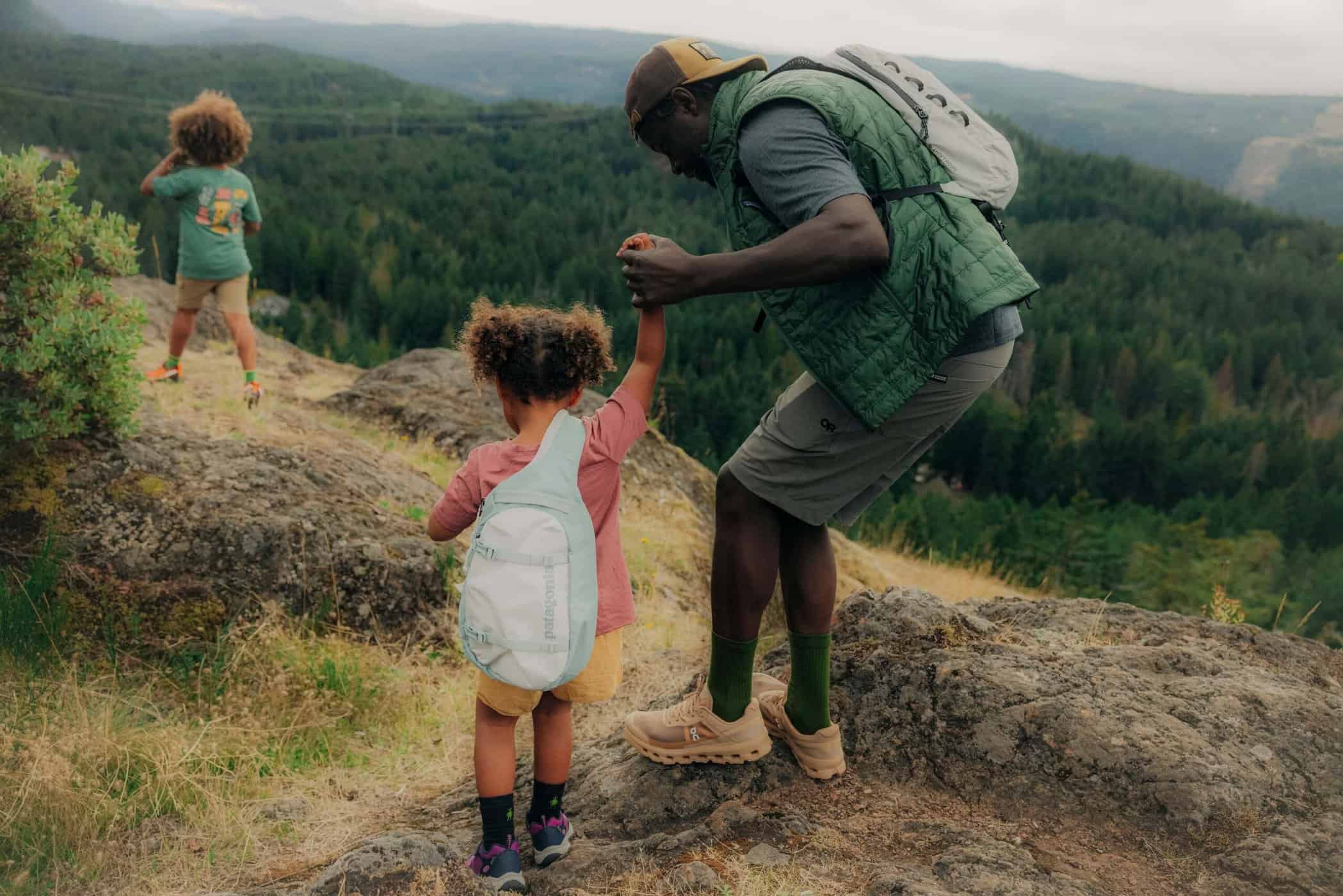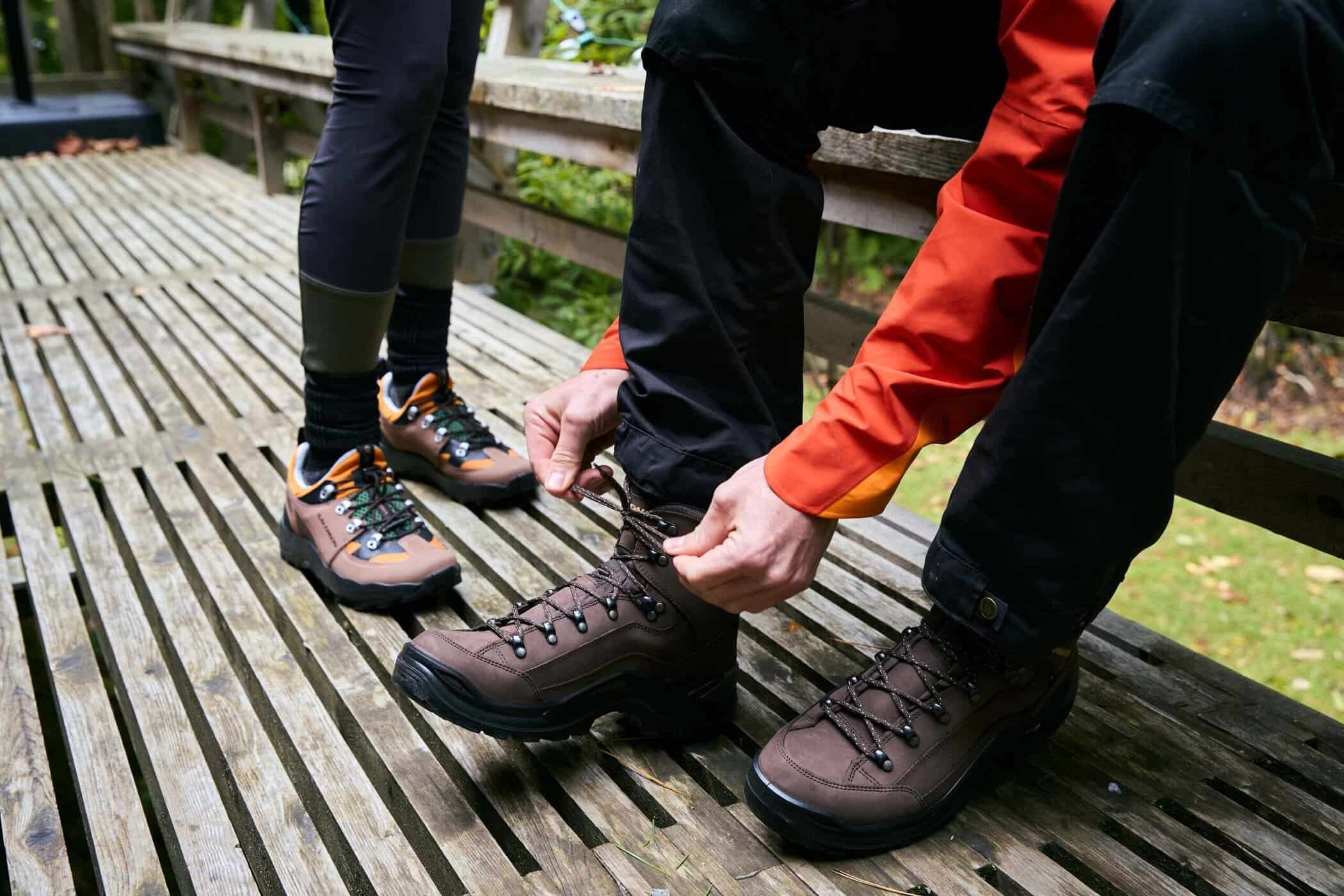We’ll also talk about essential gear, safety tips and post-hike care so that you can hit the trail with your pup year after year.
Table of contents:
Pre-Hike Preparations
While dogs are some of the best companions you could ask for on a hike, you need to make sure they can handle the trails you take them on. The first step is to take your furry friend to the vet so they are up to date on vaccinations. The vet will also be able to diagnose any potential health issues. Remember, what affects humans doesn’t always affect dogs, and vice versa.
Next, train your dog with smaller walks and hikes to get their physical conditioning up. Set a routine and stick to it for a few months so your pup gets acquainted with (and looks forward to) walking with you. If you’re near trails, start with smaller lengths and wider grades with minimal elevation gain. Then, increase those components slowly to build up their strength.
It’s also important to keep up with local and regional laws regarding dogs. Some areas don’t allow dogs, and some only allow them on a leash. Research and come up with a set of decent trails that are dog-friendly, and make sure to clean up after your furry pal.
Essential Gear For Your Dog
The outdoors are vast, and you’ll need some essentials for hiking with dogs to make the most of your adventures. First on the list is a collar and ID. If your dog breaks from your grasp and chases after something, you want to ensure your information is on the collar or ID tags when someone finds them. That way, they can contact you easily.
When it comes to harnesses and leashes, look for a sturdy, well-balanced design featuring strong clips, a handle, and an elastic portion to minimize the jolt on your pup when they pull. The Rukka Hike Running Dog Leash is one of our favourites, especially when combined with the Rukka Comfort Air Dog Harness.
Dog backpacks for hiking are great, and for longer treks, it’s a great idea to buy one. These snug contraptions can hold water, food, and treats. Dog backpacks can also hold items that come with their own clips, like water bowls, freeing up space in your own pack. We recommend collapsable silicone ones, like the Kuma Outdoor Gear Silicone Bowl.
Dogs’ paws can bleed on rough or glacial terrain, so weather and terrain-specific gear are also critical. Consider dog booties with a bit of traction for rocks and insulated or made with a thicker fabric for the winter. Many dogs can accompany you on winter adventures, but make sure you take care of their physiological needs.
Hydration and Nutrition
Hydration for dogs on hikes is a critical item to account for. Dogs need water, and trails don’t always cross reliable water sources. Make sure they are carrying some in the dog backpack or that you bring some for them. How you store the water is up to you, but having a collapsible water bowl will make your life easier. Don’t forget to bring water for yourself, too!
If you’re training your dog or just want to show affection, bringing along a dog treat pouch is a great step. You can usually strap them to your waist for easy access, and they hold a decent amount of treats. Kuma’s Dog Treat Pouch is a reliable option. For longer adventures, consider bringing more nutrition, like full meals and energy boosters, for you and your hungry companion.
Price: 19.99$
Kuma Outdoor Gear | Pet Accessory
Safety Considerations
The outdoors are full of plants, animals, and pests. Having your dog on a short lead through tall grass will help minimize the chances of contact with various bugs and bites. It’s also a good trick to prevent ticks while hiking. When you take a break, use something like the Rukka Microfibre Medium Dog Towel for them to lie on. It’ll help minimize contact with bugs.
Consider also bringing a full first aid kit for you and your dog. Some common items include Benadryl for allergic reactions, tweezers (for ticks), an antiseptic to clean out cuts, and bring gauze and bandages to wrap injuries. A saline solution helps flush out anything that may get into their eyes, like dust, twigs, bugs, or dirt. Talk with your vet first before administering any NSAIDS.
Some trails are more rugged than others. Do a bit of research to see what the profile of the trail is like. Check for exposed, rocky portions, deep woods, or snow, which could affect your dog’s paws.
Additionally, daily weather fluctuations and seasonality are important. Dogs can get spooked in lightning storms and overheat in extreme temperatures. Make sure you can stop in the shade or let them play in water on hot days. On cold days, make sure their paws are covered and that they can stay warm.
Price: 19.99$
Rukka | Pet Accessory
Some other trail hazards and considerations you need to be wary of are:
- Multi-use trails with mountain bikers and horses. Both may frighten your dog, leading to barking or pulling on the leash, which, if it happens, could mean they break from your grasp.
- Other wildlife. If the area you’re visiting has a high density of wildlife, make sure you are prepared to deal with whatever your pet’s reaction will be.
- Trails near water features are great, but make sure the water is clean, and the terrain isn’t too rugged. Steep slopes and moisture don’t mix, and both you and your pup could slip.
- Trail ruggedness. The best trails for dogs are regularly maintained, have a good tread surface and utilize features like switchbacks to ease the burden of a long climb or descent. The more primitive the trail or route, the more you need to pay attention to your dog’s physical health.
- Other people and dogs. Not everyone loves dogs. Make sure you can handle your pup if someone is nervous around them. Additionally, not all dogs love other dogs. Use a short lead when passing other dogs unless it’s obvious the dogs are ok with each other.
- Respect trails that don’t allow pets. As much as we might want to bring our dogs with us, it’s important to respect the rules of the land—for your dog’s safety, your own, and the surrounding wildlife.
Weather Preparedness
Hiking with pets is awesome, but they don’t like inclement weather any more than we do. Spend a little time researching the weather before heading out. Adjust your schedule to avoid thunderstorms, long, cold weather fronts or scorching heat.
Make sure their paws are covered to defend against scalding hot pavement, rocks, or frozen ground. Dog hiking accessories, clothing and gear are tailor-made to help your pup deal with strange weather. Make sure they are ready for whatever nature throws at them.
It’s also critically important that you can recognize signs of heat stroke or hypothermia. In hot climates, look for any agitation, excessive panting, noisy barking, a wobbly gait and vomiting or diarrhea. For hypothermia, pay attention to whether your pup is shivering, has difficulty walking, or displays abnormal confusion. Later stages involve a cold body to the touch, fixed and dilated eyes, or collapse.
Post-Hike Care
After you get back from a successful hike, spend a little time checking over your furry friend for any injuries or irritations. Look for insect bites or cuts, applying topical ointments as needed and only if suggested by your vet. Checking your dog for ticks is also an excellent habit to get into. Look through fur and around the underside of your pup.
If you find a tick, grab some tweezers and slowly work the tick out by grabbing the head (as close to the skin as your dog will allow) and pulling gently outward. If something looks more serious than you’re prepared to deal with, call your vet as soon as possible and explain the injury or irritation to them.
Once the quick physical is done, make sure to fill up their water bowl and give them a nice treat for a successful hike! Continue with a normal feeding schedule, but don’t be surprised if your pup is hungrier than normal after a day out on the trail.
Another good practice is to groom and bathe your dog after a hike. If you use dog shampoo that helps repel ticks, it’s another way to make sure irritants stay off of your pup. Plus, your pup will smell nice!
Conclusion
There you have it, the best tips and tricks for a successful adventure with your pup. Distilled, make sure you plan accordingly, train your dog to handle the stress of a hike and bring lots of hydration and nutrition. Essential gear includes leashes, harnesses, backpacks, water bowls, dog towels, and a full first aid kit. For rougher terrain or conditions, bring paw coverings as well.
When you’re done with your hike, make sure to check your pup for ticks, irritations, and any bug bites or cuts so you can treat them. Remember to start slow and work your way up to tougher objectives. This way, you minimize the risk of your pup pulling a muscle or injuring themselves. Last but not least, have a great time on the trail with your dog!





















